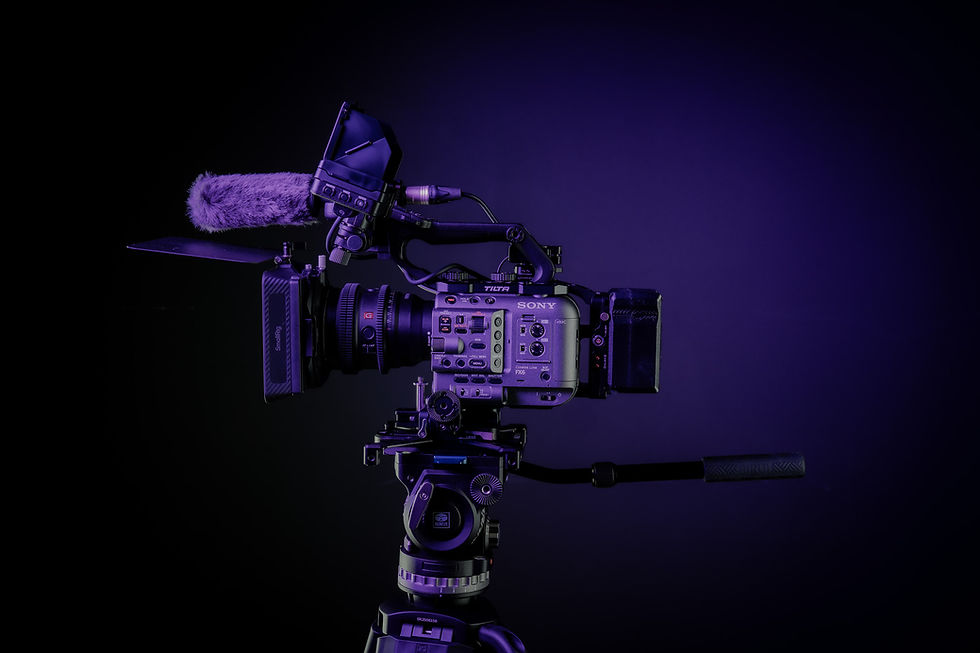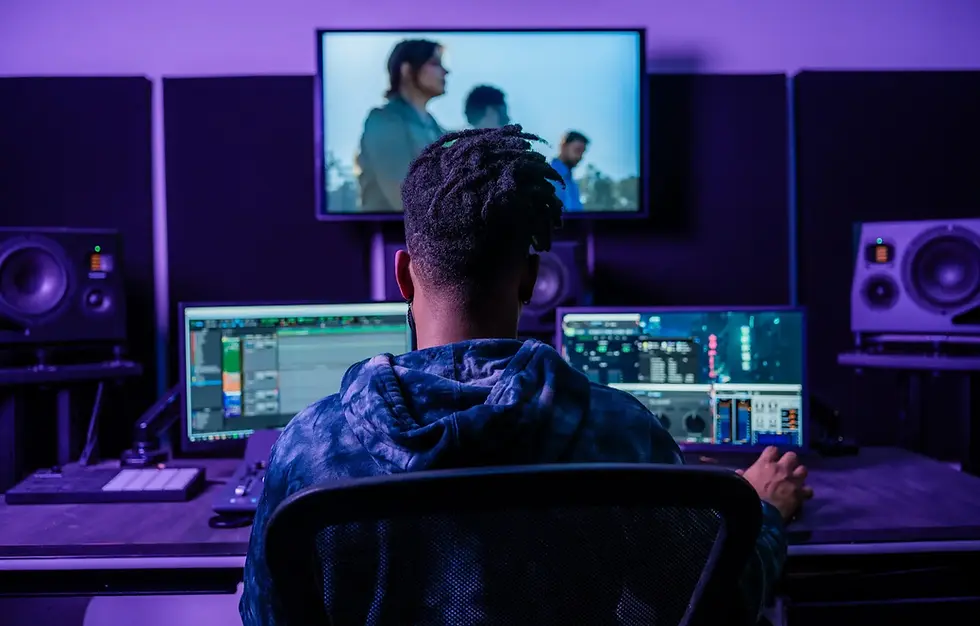Top 5 Mistakes That Ruin Production Sound (and How to Avoid Them)
- Matthew Harriott
- Jul 18
- 4 min read
Updated: Aug 16

Bad audio is one of the quickest ways you lose an audience and take a hit to your viewership. While viewers will forgive uneven lighting or a shaky camera move, muffled dialogue or distracting background noise can make even the most polished visuals feel amateur. For filmmakers, producers, agencies, and content creators, production audio is often underestimated until it’s too late.
Avoiding common pitfalls on set is the difference between an efficient post-production process and a costly scramble to salvage unusable tracks. Here are the top five production audio mistakes and how to prevent them.
1. Relying on Camera Microphones
Built-in camera microphones are designed for reference, not for professional capture. They pick up everything in the environment, from crew chatter to the hum of nearby equipment, and rarely provide clean, isolated dialogue.

How to Avoid It: Always use dedicated microphones. A properly placed boom microphone or lavalier will capture dialogue with clarity and presence. Pairing the right mic to the scene ensures that post-production begins with clean, usable audio rather than compromised recordings.
2. Poor Mic Placement
Even with professional gear, improper placement leads to distorted or hollow dialogue. A lav rubbing against clothing creates rustling noise, while a boom held too far from the talent sounds thin and distant.
How to Avoid It: Treat microphone placement as carefully as camera framing. Lavaliers should be secured discreetly but close enough to the source for clarity. Booms should be aimed precisely at the talent’s mouth, with operators adjusting for movement and blocking. Testing placements before rolling prevents surprises later.
3. Ignoring Room Tone and Ambience
Room tone often seems insignificant in the rush of production, but missing it can create headaches in post. Without consistent background audio, editors struggle to bridge dialogue cuts, resulting in jarring transitions that pull the audience out of the story.
How to Avoid It: Always record at least 30 seconds of clean room tone in every location. Capture natural ambience such as traffic, birds, or crowd murmur when appropriate. These audio assets are essential for smooth edits and natural soundscapes in post-production.
4. Recording in Noisy Environments Without Control
Production schedules often push crews into challenging locations, but failing to anticipate noise issues can render dialogue unusable. Air conditioners, refrigerators, traffic, or even crew movement can dominate recordings and can compromise the production sound.
How to Avoid It: Scout locations with sound in mind, not just visuals. Turn off unnecessary machines, seal windows, and keep sets quiet during takes. A sound team that collaborates with production can identify noise sources early and suggest solutions before rolling.
5. Assuming Production Sound Mistakes Can Be Fixed in Post
Perhaps the most dangerous mistake is assuming that audio issues can always be cleaned later. While modern software tools can help reduce noise, they cannot completely restore lost clarity, eliminate clothing rustle, or recreate the natural performance of an actor. Every attempt to “fix it in post” degrades the original production sound, results in unnatural-sounding dialogue, and adds additional costs to the production.

How to Avoid It: Prioritize clean recordings at the source. When a problem arises on set, stop and address it immediately rather than relying on audio post-production tools. This approach protects both performance and budget.
Bonus Tip: Skipping Proper Communication with the Sound Team
One of the easiest and most often overlooked ways to compromise production sound is by failing to keep the sound team in the loop. When blocking, camera moves, or set changes happen without communication, sound crews are forced to adapt on the fly, often leading to missed cues or compromised recordings.
How to Avoid It: Treat the sound department as a key collaborator, not an afterthought. Loop them in during pre-production, keep them updated on creative choices, and make sure they have time to prepare for changes. A few minutes of communication can prevent hours of fixes later.
The Real Cost of Bad Production Audio
Each of these mistakes carries hidden expenses. Reshoots, ADR sessions, and extended editing time all drain resources and eat into your post-production timeline. More importantly, poor sound diminishes the credibility of the project itself, undermines the on-screen performances, and distracts the audiences from the story and from your message.
Clean, professional production sound saves time, protects creative intent, and ensures that projects properly connects with their audience.
Final Takeaway: Protect the Sound, Protect the Story
Strong visuals may capture attention, but sound is what keeps audiences engaged. Avoiding these five mistakes is not just about technical precision, it’s about protecting the emotional impact of the project. Investing in skilled sound professionals and prioritizing audio on set ensures that every word, nuance, and performance is preserved.
For filmmakers, agencies, and brands, great production sound is not an added luxury. It is the foundation of a successful project.




Comments